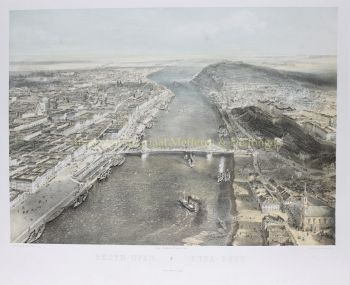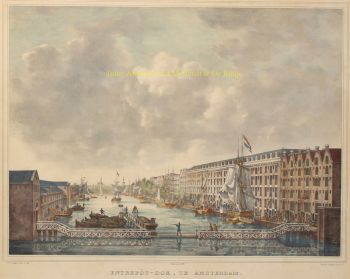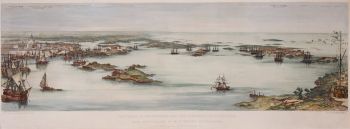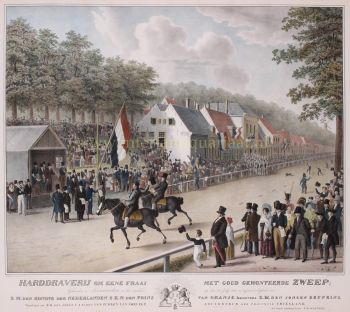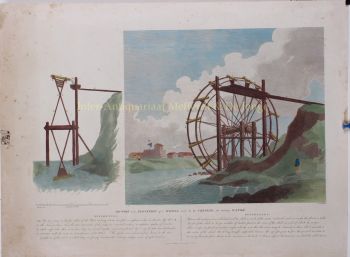Whaling 1825
Thomas Sutherland
€ 975
Inter-Antiquariaat Mefferdt & De Jonge
- About the artwork“South Sea Whale Fishery.” Aquatint engraving made in 1825 by Thomas Sutherland after a painting by William John Huggins official Marine Painter to his Majesty. Size: 43,2 x 55,9 cm. “A representation of the Ships Amelia Wilson and Castor off the Island of Bouro with their Boats and Crew in the various processes of Fishing, shewing the manner the Spermacetti Whales are caught, also the mode of cutting them into the Ship, and Boiling the Oil upon the Deck.” The view illustrates the South Sea Whale Fishery, expressing the excitement, richness, romance, and brutality of the whaling trade. In this image the sailors of the HMS Amelia Wilson battle with numerous sperm whales with the island of Buru (Indonesia) in the background. The English southern whale fishery, commencing from London in 1775, was conducted primarily in the mid to south Atlantic, but by the mid-1790s it had moved to the Pacific and Indian Oceans. Initially, the move was limited to the areas off the coasts of Africa, South America and the east coast of Australia. But by 1815 the trade had spread to the wider Pacific, encompassing areas in the south, central and north Pacific, as well as the rim areas between Japan and New Guinea. In the Indian Ocean the trade extended north to the Seychelles and into the waters around Timor and the Moluccas, such as to be seen on our engraving. It was the oil of the sperm whale they were after. Sperm whale oil was always in demand as it had a number of unique qualities. It was more portable than gas and burnt more purely and with less smoke than animal, vegetable and other whale oils. As a lubricant its fine qualities resulted in much less wear on moving parts. Sperm oil also played a key role in lighting the better-class houses of London and contemporaries correlated the spread and use of gas lighting in streets with the increased use of Argand lamps in private homes. A price for sperm oil per gallon was always quoted in the London papers. Herman Melville, author of Moby-Dick (1851), judged William John Huggins to be one of very few artists able to portray a whale convincingly. Melville advised that “the only mode in which you can derive even a tolerable idea of his living contour, is by going whaling yourself; but by so doing, you run no small risk of being eternally stove and sunk by him”. Price: Euro 975,-
Are you interested in buying this artwork?
Artwork details
Category
Related artworks
- 1 - 4 / 24
- 1 - 4 / 12








